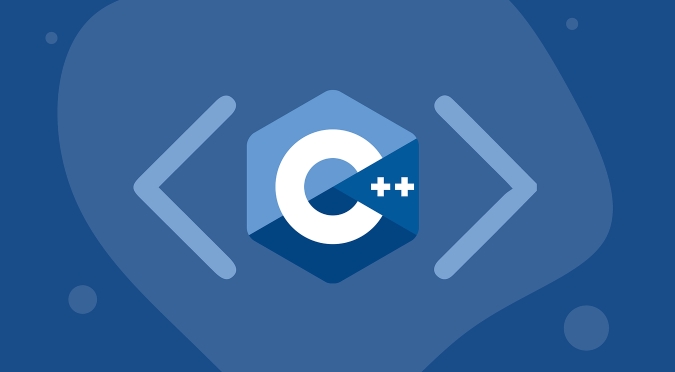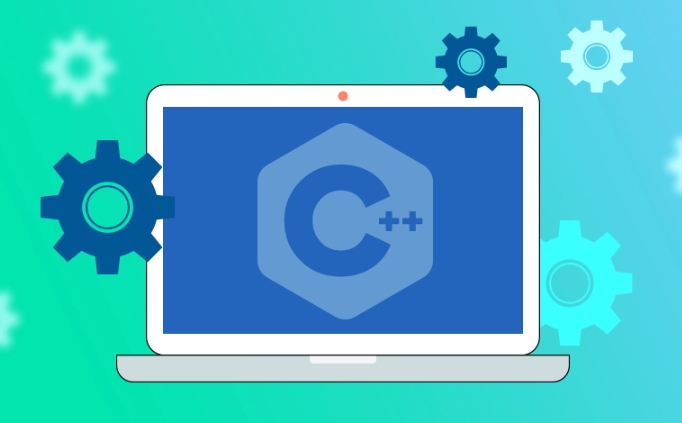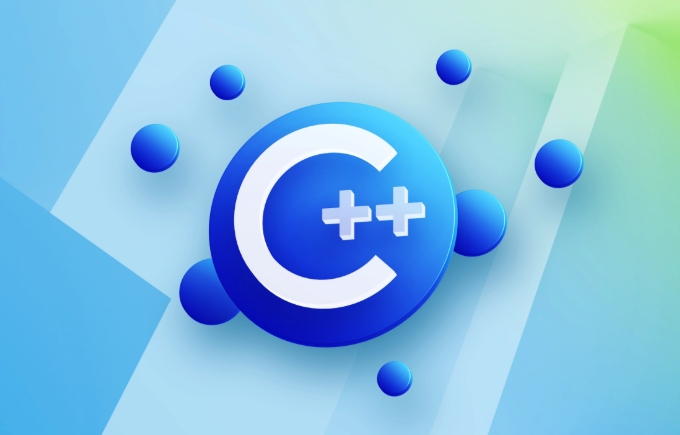C std::memory_order_seq_cst example
std::memory_order_seq_cst provides sequential consistency guarantees that all threads see a consistent order of operations and no reordering occurs. 1. In the write thread, data.store(42, std::memory_order_seq_cst) is executed first, ready.store(true, std::memory_order_seq_cst) is executed, and the two will not be reordered; 2. The read thread waits through while(!ready.load(std::memory_order_seq_cst)). Once ready is true, it is guaranteed to be able to read the value of data to be 42; 3. Using seq_cst can prevent the compiler and CPU from reordering, ensuring that the post-write reads across threads are synchronized correctly; 4. If memory_order_relaxed is used, it may cause ready to be set to true in advance while data is not written, causing undefined values to be read; 5. std::memory_order_seq_cst It is the default memory order and is suitable for most scenarios. Although the performance is slightly lower than acquire/release, it costs less on x86. It is recommended to use it when there is no extreme optimization required to ensure correctness and readability.

std::memory_order_seq_cst is the strongest memory order in C, providing sequential consistency guarantees. It ensures that the order of atomic operations seen by all threads is consistent and that all operations are executed in program order without reordering.

Here is a simple example using std::memory_order_seq_cst , showing how two threads communicate safely through atomic variables.
? Example: Inter-thread synchronization (read after writing)
#include <iostream>
#include <thread>
#include <atomic>
#include <vector>
std::atomic<bool> ready{false};
std::atomic<int> data{0};
void writer() {
data.store(42, std::memory_order_seq_cst); // Write data first ready.store(true, std::memory_order_seq_cst); // Set "ready"
}
void reader() {
while (!ready.load(std::memory_order_seq_cst)) { // Wait for ready to become true
// Spin waiting}
std::cout << "data = " << data.load(std::memory_order_seq_cst) << std::endl;
// I'll be sure to read 42
}
int main() {
std::thread t1(writer);
std::thread t2(reader);
t1.join();
t2.join();
return 0;
} ✅ Why use seq_cst ?
In this example:

-
data.store(42, seq_cst)andready.store(true, seq_cst)are executed in order in the write thread. - The read thread waits through
ready.load(seq_cst). Once you seeready == true, it can ensure thatdatahas been written. -
std::memory_order_seq_cstprevents the compiler and CPU from reordering these two store operations, and also ensures that the order of operations seen by other threads is consistent.
If there is no seq_cst (for example, memory_order_relaxed ), it may be:
-
readyis set totruefirst, anddatahas not been finished yet; - The read thread reads
ready == true, butdatais an undefined value.
? Summary of key points
-
std::memory_order_seq_cstis the default memory order, suitable forload,store,exchange,compare_exchangeand other operations. - It provides a globally consistent order of operations, which is easiest to understand, and is suitable for most scenarios.
- It is slightly lower than
memory_order_acquire/releasein performance, but it is relatively small overhead on x86 architecture.
✅ More common writing method (the default is seq_cst)
data.store(42); // Use std::memory_order_seq_cst by default ready.store(true); // Same as above
Unless you explicitly need weak memory order to optimize performance, it is recommended to use the default seq_cst , which is simple and safe.

Basically that's it. seq_cst is the most "safe" choice in multithreaded programming, suitable for beginners and most synchronization scenarios.
The above is the detailed content of C std::memory_order_seq_cst example. For more information, please follow other related articles on the PHP Chinese website!

Hot AI Tools

Undress AI Tool
Undress images for free

Undresser.AI Undress
AI-powered app for creating realistic nude photos

AI Clothes Remover
Online AI tool for removing clothes from photos.

Clothoff.io
AI clothes remover

Video Face Swap
Swap faces in any video effortlessly with our completely free AI face swap tool!

Hot Article

Hot Tools

Notepad++7.3.1
Easy-to-use and free code editor

SublimeText3 Chinese version
Chinese version, very easy to use

Zend Studio 13.0.1
Powerful PHP integrated development environment

Dreamweaver CS6
Visual web development tools

SublimeText3 Mac version
God-level code editing software (SublimeText3)
 Using std::chrono in C
Jul 15, 2025 am 01:30 AM
Using std::chrono in C
Jul 15, 2025 am 01:30 AM
std::chrono is used in C to process time, including obtaining the current time, measuring execution time, operation time point and duration, and formatting analysis time. 1. Use std::chrono::system_clock::now() to obtain the current time, which can be converted into a readable string, but the system clock may not be monotonous; 2. Use std::chrono::steady_clock to measure the execution time to ensure monotony, and convert it into milliseconds, seconds and other units through duration_cast; 3. Time point (time_point) and duration (duration) can be interoperable, but attention should be paid to unit compatibility and clock epoch (epoch)
 How to get a stack trace in C ?
Jul 07, 2025 am 01:41 AM
How to get a stack trace in C ?
Jul 07, 2025 am 01:41 AM
There are mainly the following methods to obtain stack traces in C: 1. Use backtrace and backtrace_symbols functions on Linux platform. By including obtaining the call stack and printing symbol information, the -rdynamic parameter needs to be added when compiling; 2. Use CaptureStackBackTrace function on Windows platform, and you need to link DbgHelp.lib and rely on PDB file to parse the function name; 3. Use third-party libraries such as GoogleBreakpad or Boost.Stacktrace to cross-platform and simplify stack capture operations; 4. In exception handling, combine the above methods to automatically output stack information in catch blocks
 What is a POD (Plain Old Data) type in C ?
Jul 12, 2025 am 02:15 AM
What is a POD (Plain Old Data) type in C ?
Jul 12, 2025 am 02:15 AM
In C, the POD (PlainOldData) type refers to a type with a simple structure and compatible with C language data processing. It needs to meet two conditions: it has ordinary copy semantics, which can be copied by memcpy; it has a standard layout and the memory structure is predictable. Specific requirements include: all non-static members are public, no user-defined constructors or destructors, no virtual functions or base classes, and all non-static members themselves are PODs. For example structPoint{intx;inty;} is POD. Its uses include binary I/O, C interoperability, performance optimization, etc. You can check whether the type is POD through std::is_pod, but it is recommended to use std::is_trivia after C 11.
 How to call Python from C ?
Jul 08, 2025 am 12:40 AM
How to call Python from C ?
Jul 08, 2025 am 12:40 AM
To call Python code in C, you must first initialize the interpreter, and then you can achieve interaction by executing strings, files, or calling specific functions. 1. Initialize the interpreter with Py_Initialize() and close it with Py_Finalize(); 2. Execute string code or PyRun_SimpleFile with PyRun_SimpleFile; 3. Import modules through PyImport_ImportModule, get the function through PyObject_GetAttrString, construct parameters of Py_BuildValue, call the function and process return
 What is a null pointer in C ?
Jul 09, 2025 am 02:38 AM
What is a null pointer in C ?
Jul 09, 2025 am 02:38 AM
AnullpointerinC isaspecialvalueindicatingthatapointerdoesnotpointtoanyvalidmemorylocation,anditisusedtosafelymanageandcheckpointersbeforedereferencing.1.BeforeC 11,0orNULLwasused,butnownullptrispreferredforclarityandtypesafety.2.Usingnullpointershe
 How to pass a function as a parameter in C ?
Jul 12, 2025 am 01:34 AM
How to pass a function as a parameter in C ?
Jul 12, 2025 am 01:34 AM
In C, there are three main ways to pass functions as parameters: using function pointers, std::function and Lambda expressions, and template generics. 1. Function pointers are the most basic method, suitable for simple scenarios or C interface compatible, but poor readability; 2. Std::function combined with Lambda expressions is a recommended method in modern C, supporting a variety of callable objects and being type-safe; 3. Template generic methods are the most flexible, suitable for library code or general logic, but may increase the compilation time and code volume. Lambdas that capture the context must be passed through std::function or template and cannot be converted directly into function pointers.
 How does std::move work in C ?
Jul 07, 2025 am 01:27 AM
How does std::move work in C ?
Jul 07, 2025 am 01:27 AM
std::move does not actually move anything, it just converts the object to an rvalue reference, telling the compiler that the object can be used for a move operation. For example, when string assignment, if the class supports moving semantics, the target object can take over the source object resource without copying. Should be used in scenarios where resources need to be transferred and performance-sensitive, such as returning local objects, inserting containers, or exchanging ownership. However, it should not be abused, because it will degenerate into a copy without a moving structure, and the original object status is not specified after the movement. Appropriate use when passing or returning an object can avoid unnecessary copies, but if the function returns a local variable, RVO optimization may already occur, adding std::move may affect the optimization. Prone to errors include misuse on objects that still need to be used, unnecessary movements, and non-movable types
 What is an abstract class in C ?
Jul 11, 2025 am 12:29 AM
What is an abstract class in C ?
Jul 11, 2025 am 12:29 AM
The key to an abstract class is that it contains at least one pure virtual function. When a pure virtual function is declared in the class (such as virtualvoiddoSomething()=0;), the class becomes an abstract class and cannot directly instantiate the object, but polymorphism can be realized through pointers or references; if the derived class does not implement all pure virtual functions, it will also remain an abstract class. Abstract classes are often used to define interfaces or shared behaviors, such as designing Shape classes in drawing applications and implementing the draw() method by derived classes such as Circle and Rectangle. Scenarios using abstract classes include: designing base classes that should not be instantiated directly, forcing multiple related classes to follow a unified interface, providing default behavior, and requiring subclasses to supplement details. In addition, C







